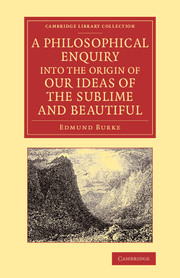Crossref Citations
This Book has been
cited by the following publications. This list is generated based on data provided by Crossref.
Dodgson, N.A.
2012.
Mathematical characterization of Bridget Riley's stripe paintings.
Journal of Mathematics and the Arts,
Vol. 6,
Issue. 2-3,
p.
89.
Vieira, Patricia
2016.
Mountains Inside Out: The Sublime Mines of Novalis.
Interdisciplinary Studies in Literature and Environment,
Vol. 23,
Issue. 2,
p.
293.
D’Amore, Manuela
2017.
The Royal Society and the Discovery of the Two Sicilies.
p.
147.
Sykes, John D.
2018.
God and Self in the Confessional Novel.
p.
39.
Gilbert, Pamela K.
2018.
Fear in the Medical and Literary Imagination, Medieval to Modern.
p.
79.
Beaumont, Matthew
2018.
LOOKING THROUGH LIDLESS EYES.
Angelaki,
Vol. 23,
Issue. 6,
p.
3.
Béres Rogers, Kathleen
2019.
Creating Romantic Obsession.
p.
119.
Sangster, Matthew
2020.
Southey Versus London: Proto-Romantic Disaffection and Dehumanisation in the British Metropolis.
Romanticism on the Net,
Peirano, Pierre-François
2022.
« Au cœur des Andes » : les toiles de Frederic Church inspirées par l’Amérique du Sud.
Babel,
Vol. 45,
Issue. ,
p.
166.
Creed, W. E. Douglas
Hudson, Bryant A.
Okhuysen, Gerardo A.
and
Smith-Crowe, Kristin
2022.
A Place in the World: Vulnerability, Well-Being, and the Ubiquitous Evaluation That Animates Participation in Institutional Processes.
Academy of Management Review,
Vol. 47,
Issue. 3,
p.
358.
Hay, Katia
2022.
On the Tragic-Sublime and Tragic Freedom.
Les Cahiers philosophiques de Strasbourg,
p.
163.
Rogez, Mathilde
2022.
From the Blitz to the Boer War, Re-presenting (Inter)National and Colonial Wars and Personal Traumas: Craig Higginson’s The Landscape Painter as a lyrical epic.
Revue LISA / LISA e-journal,
Lombard, David
2023.
Hunting for the Sublime in Steven Rinella’s Memoirs and Still Lifes.
Miranda,
Attanucci, Timothy
2023.
Romantische Ökologien.
Vol. 4,
Issue. ,
p.
185.
Chen, Jen-Feng
Lin, Po-Hsien
and
Lin, Rungtai
2023.
Cross-Cultural Design.
Vol. 14023,
Issue. ,
p.
3.
Peiren, SHAO
2023.
New Perspectives on Geography of Media.
p.
103.
Comfort, William Edgar
and
Freitas, Ana Luísa
2023.
Social and Affective Neuroscience of Everyday Human Interaction.
p.
53.
O’Dowd, Andrew
2024.
The Process of Becoming Other in the Classical and Contemporary World.
p.
323.
Bloom, Lisa E.
2024.
Jewish “Ghosts”: Judit Hersko and Susan Hiller and the Feminist Intersectional Art of Post-Holocaust Memory.
Arts,
Vol. 13,
Issue. 2,
p.
50.
Loughran, Kevin
2024.
Environmental Authenticity: Constructing Nature in Postindustrial Parks.
Qualitative Sociology,
Vol. 47,
Issue. 3,
p.
441.



